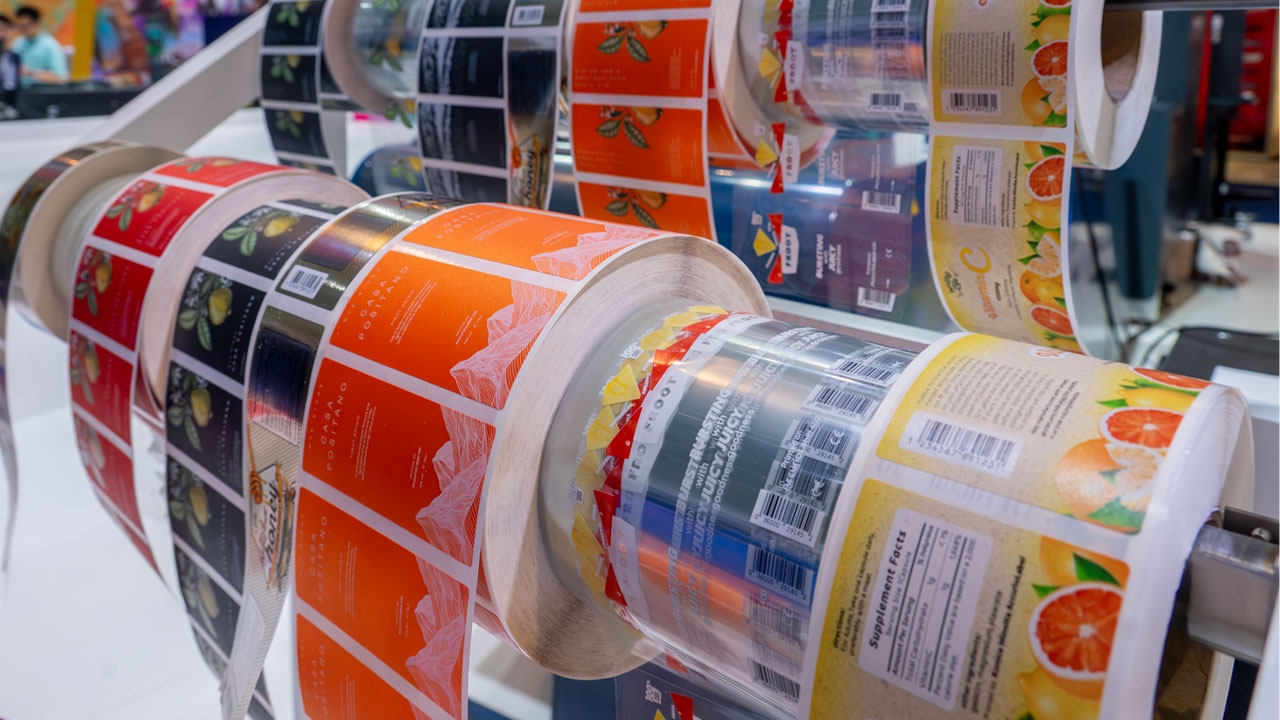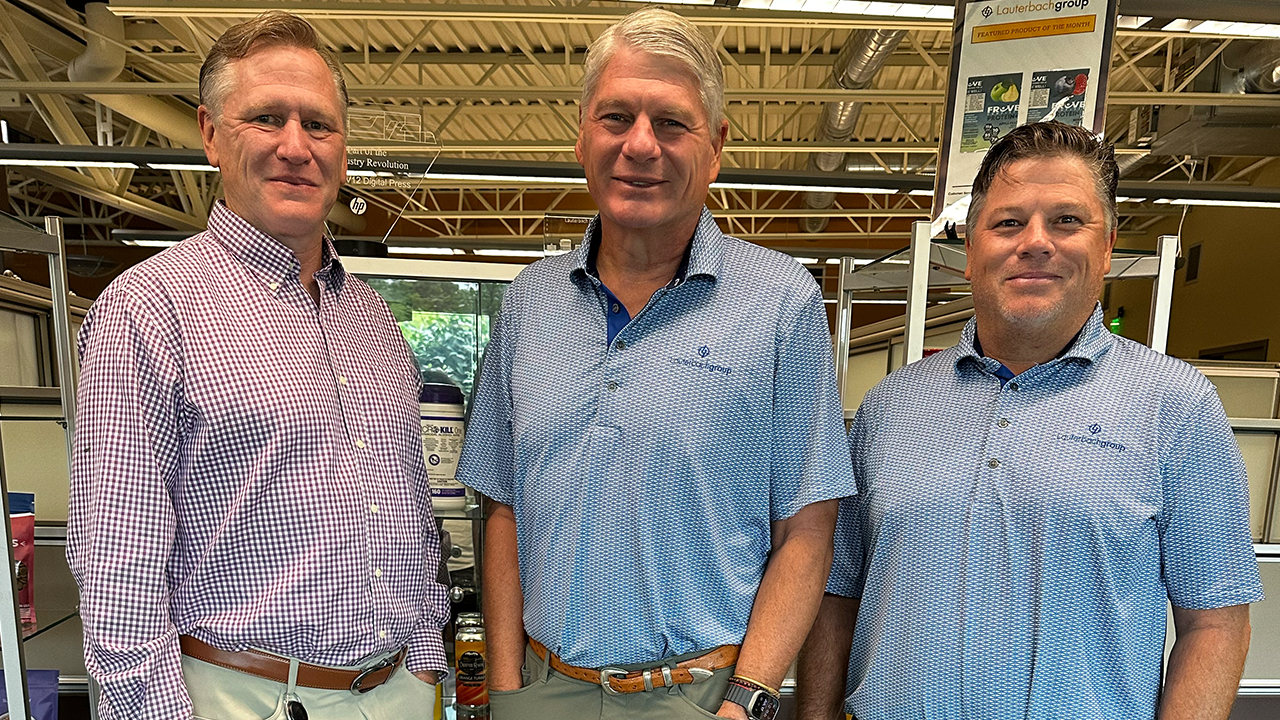Konica Minolta industry predictions for label and packaging industry in 2024
Comment by Sacha-Vittorio Paolucci, head of industrial print business development at Konica Minolta Business Solutions Europe.

In a world of uncertainty where a perceived global downturn in overall print production is part of the equation, it is heartening to see that digital labels, packaging and embellishment are shining brightly.
A need for greater automation and for innovative end-to-end ecosystems will continue to be high on the agenda and an essential driver forward for industry stakeholders such as converters, brands, and suppliers. An increased focus on complete production workflows in packaging and label sectors is also helping converters to rethink possibilities in a world of new opportunities.
With labelling and packaging requirements becoming ever more complex as data demands grow, compliance and regulatory environments tighten, the supply chain increasingly relies on labelling as a vital source of traceability.
Poised for yet more substantial growth
All these factors point to a narrative that Europe’s digital label and packaging markets – and indeed those across the world – are poised for yet more substantial growth. ‘Demand for digitally printed packaging remained generally high with products such as labels being produced in volume and no longer being confined to short-run promotional work,’ said Smithers in its print equipment markets global overview. Similarly, digitally printed corrugate saw high demand from the packaging industry.
Manufacturing, retail, transportation, textiles, food and drink, and logistics are all among the important factors that have made the digital production of labels become a mainstream technology, with many markets in packaging at the tipping point and ripe for digital production.
Drinks market takes to digital technology
The drinks business is one sector where we will see customers grow their business exponentially with digital label printing coupled with label embellishment in the coming years. Tactile effects with varnish and foils are becoming increasingly important in wine-buyers decision-making. You can find out more about the tangible ‘wow!’ effects on paper by reading a specialist blog from Konica Minolta here.

The confidence in digitally produced wine labels is also backed up by industry experts. ‘Over the next five years new digital embellishment technologies will encourage the use of shorter run lengths, something that the wine market will be keen to embrace,’ said the Smithers report. ‘Also, with the growth of premium priced wines, security and anti-counterfeiting built into the label is becoming more important to the wineries.’
Anti-counterfeiting possibilities, including an innovative and state-of-the-art inkjet customization project with Industrial Inkjet Ltd (IIJ), were an important part of our presence at Labelexpo last September. Our AccurioLabel 230 press was configured with Grafisk Maskinfabrik’s (GM) DC330Mini. IIJ, which is a recognized global expert in security printing with UV inks, also showed other reactive possibilities as part of the setup that drew the crowds to our stand.
Igniting print possibilities for winemakers
Our long-standing customer, Firus Druck, is one example of how its growth into digital label production has been nothing short of spectacular. The label converter serving local, national and international wine producers was one of the first customers of our AccurioLabel 400, the latest single-pass toner-based press in our portfolio. You can read the full story here and watch on YouTube here.
As European market share leader in digital label press systems (Infosource), we will continue to push the boundaries to help converters ignite their printing possibilities. We believe that closer collaborations with customers and partners, ongoing commitments to revolutionizing printing technologies and improving efficiencies will be crucial in the years ahead.
Workflow, software and process automation, together with cloud solutions, are also key efficiency drivers as part of the drive towards the ‘smart factory’.
A commitment to customers and innovation
Our unflinching commitment to customers and innovation was demonstrated at Labelexpo last September. The show provided the perfect platform to announce that we have now installed more than 1,200 of our AccurioLabel presses globally. And this is a market we entered less than a decade ago.
Despite the buoyancy in digital label-making, overall growth predictions for the sector are said to have a ‘soft outlook’. This will continue at least through the first half of 2024, according to recent Finat market analysis.
One of the negative trends remarkably is a ‘continuous deceleration’ in e-commerce sales, which has been a significant driver in recent years. ‘The slowdown is here to stay, as post pandemic tailwinds fade and as high inflation and rising interest rates significantly curb demand,’ says the report.
Notwithstanding that we have made huge strides in label markets, we also acknowledge the significant challenges that will be faced in the year ahead for our customers. Our gut feeling, however, that is that issues they face such as the supply of raw materials will begin ease. This is despite a Gartner report that pointed to a survey in 2021 revealing 68 percent of supply chain leaders constantly commented on high-impact disruptions and that 79 percent of organizations with 500-plus employees want to be better prepared for risk over the next few years.
A commitment to active training programs
In addition to supply-and-demand issues, all our customers – including printers, converters, CRDs and corporates - are not immune to other indirect effects of world events. The pandemic and enforced lockdown meant a significant number of experienced employees retired early, adding to skilled labor shortages, and there are increasing trends towards working from home.
However, we believe that our customers will look to commit more funding for attractive training programs, continuous staff development, as well as accommodating a work-life balance. The fact that our products are easy to use for our customers makes the jobs for the talents they are seeking more attractive. And why not look to hire more young talent – and train them yourselves! You can read more about our approach in this blog.
Ever-more important in the future will be Industry 5.0 – the emerging phase of industrialization where humans work alongside advanced technology and artificial intelligence-powered robots to enhance workplace processes. All this will bring the human-centricity back into Industry 4.0, as well as increased resilience and an improved focus on sustainability.
Whatever lies ahead, our commitment remains to deliver the best possible service to all our employees, clients and partners.
Stay up to date
Subscribe to the free Label News newsletter and receive the latest content every week. We'll never share your email address.

